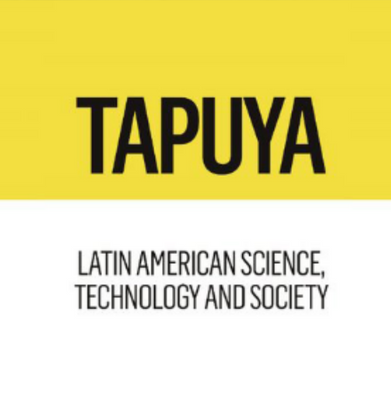Tapuya publishes three types of articles (provided they have not been previously published, and are not currently under consideration elsewhere):
Original Articles
An Original Article is the output of an investigation into a perennial or emerging STS topic. Authors of Original Articles are able to formulate a main question or problem statement, develop an approach or theory to address the problem, establish a main argument, and supply the evidence that supports it. The article explains what these findings help us to understand, and how they challenge or expand STS scholarship. Tapuya welcomes original submissions of no more than 7000 words, in English.
Authors must also provide a 200 word Abstract and 4-5 Keywords (which ideally are not replicated in the Title). Original articles are peer reviewed. Original Research Articles may be published as stand-alone papers or within a Thematic Cluster.
The Article Processing Charge (APC) for Original Articles is 850 USD. Please see Submission FAQ for questions about financial support regarding APCs.
Literature Review Articles
Literature Review Articles are original research manuscripts that trace the trajectories of emerging or historical themes, and critically engage with existing approximations to the topic. Length: 4000 to 7000 words. Literature Review Articles are peer reviewed. The literature addressed in the Review Article may be written in any language. Literature Review Articles that put different research traditions in conversation with each other are especially suited for Tapuya.
Literature Review Articles can be an opportunity for graduate students or junior scholars to publish in Tapuya, or an opportunity for more established scholars to explore an enduring STS topic with fresh eyes. Literature Review Articles may be published as stand-alone papers or within a Thematic Cluster.
The Article Processing Charge (APC) for Literature Review Articles is 850 USD. Please see Submission FAQ for questions about financial support regarding APCs.
For examples of Literature Review Articles, see the following:
- N. Hernandez Vidal, “Territorializando STS: an analysis of current discussions about agro- biotechnology governance in Latin America, Europe, and the USA.” Volume 1, p. 70-83.
- G. Elisa Sued, “The cyborg metaphor in Ibero-American science, technology and gender literature.” Volume 1, p 95-108.
- D.J. Hess, “The anti-dam movement in Brazil: expertise and design conflicts in an industrial transition movement.” Volume 1, p. 256-279
Book Reviews
Book Reviews are not book summaries; they are commissioned essays that critically engage with one or more books. Essays that put different research traditions in conversation with each other are especially suited for Tapuya. They can have their own title (this does not need to be the title of the book under review).
Length can vary between 1200 words and 400 additional words per book reviewed. For example: 1600 words for a review of one book. 2000 words for a review of two books.
Book Reviews may be published as stand-alone essays or within a Thematic Cluster.
Book Reviews are not peer reviewed (although they are commissioned and thoroughly assessed by an Associate Editor and a team of Book Review editors); they do not incur Article Processing Charges (APCs).
Please do not submit unsolicited Book Reviews. If you are interested in being considered as a Book Review Author, please contact Associate Editor José Ragas at jose.ragas@uc.cl.
Thematic Clusters
Thematic Clusters are Tapuya’s version of Special Issues. They are edited by one or more guest editors, who join forces with authors (of Original Articles as well as Literature Review Articles and Book Reviews) to tackle an STS issue of current significance in Latin America and beyond it. Thematic Clusters may elicit an Open Call for Papers (to be agreed upon with the Editor-in-Chief) or a Closed Call for Papers (when the prospective cluster editor has already enrolled potential authors to submit).
Thematic Clusters have thus far included 4 to 10 articles. Larger collections may be divided into Part A and Part B (with each Part published in a different Volume).
Feedback from authors and readers, as well as download data, suggest that Thematic Clusters have become useful teaching tools across the globe.
Please contact Vivette García Deister, Editor-in-Chief at tapuyalastseditor@gmail to discuss Thematic Cluster proposals.
Submission and review process
There are four stages to the submission and review process.
- First, authors submit their manuscripts through the Taylor & Francis website (journal homepage: www.tandfonline.com/ttap and submission site: www.edmgr.com/ttap), and receive an acknowledgment of submission. The Editorial Team assesses the manuscript and the author is notified of the decision to a) reject, b) declare incomplete submission, or c) proceed to peer review.
- Second, if c, the manuscript is peer reviewed, and the reviews are assessed by the Editor-in-Chief and/or submission editor. Author receives one of the following decisions: Accept, Accept with minor revisions, Revise and resubmit, or Reject.
- Third, if a paper is accepted, the Editor-in-Chief assesses the author’s financial status, and then sends the manuscript to the Taylor & Francis production process with the recommendation of full, partial, or no waiver of Article Processing Charge (APC).
- Fourth, Taylor & Francis manages the manuscript’s journey through copyediting and proofreading to publication, and takes over correspondence with the author.
Time from submission to publication takes between 4 and 8 months. Tapuya has transparent processes and informs authors where their manuscript is at every stage.
